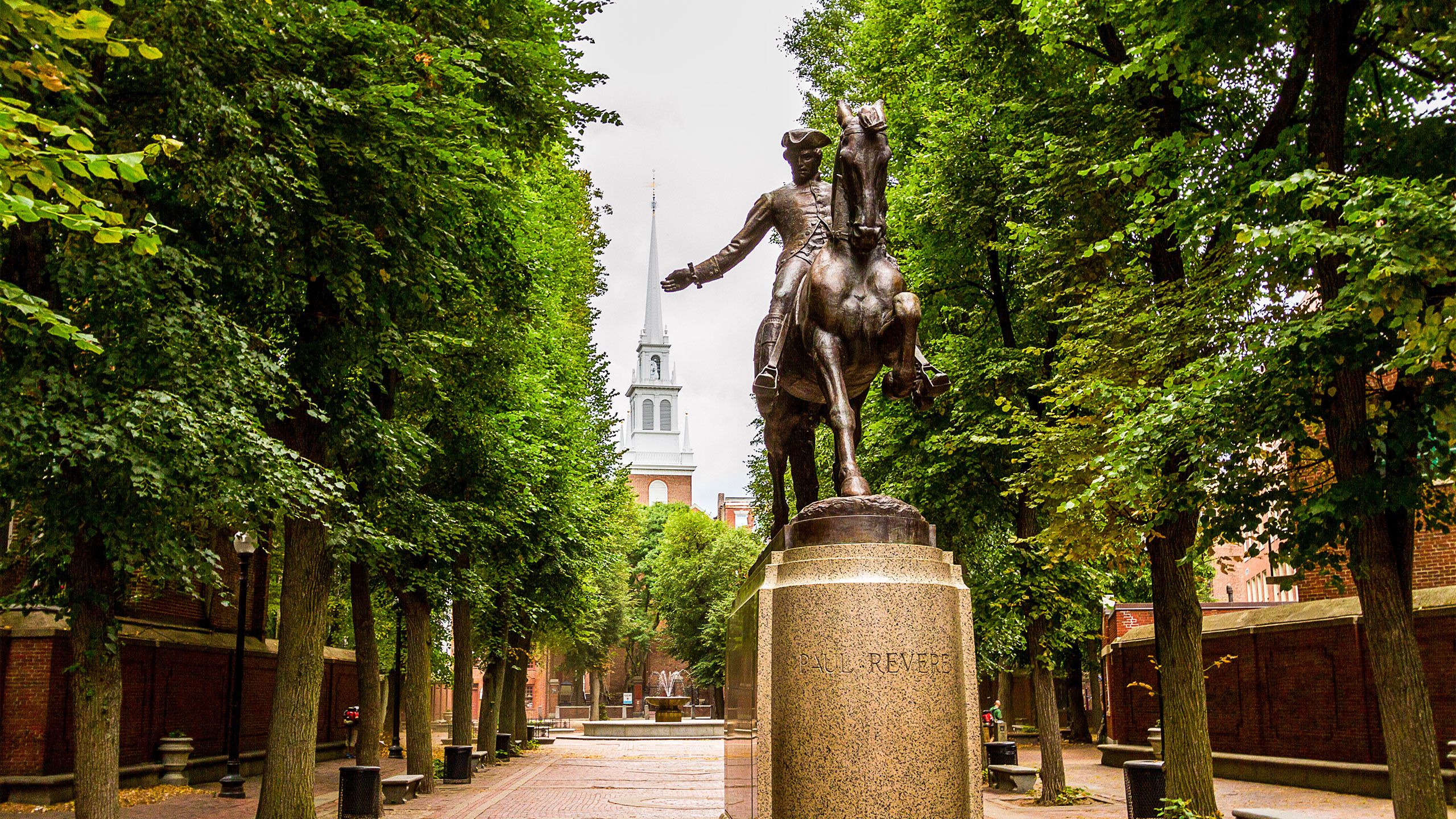Historian Shines Spotlight on Role of Free Press in Birth of America
As Independence Day draws near, classic patriot’s tale still provides a lesson in speaking out

“The British are coming!
The British are coming!”

Paul Revere's ride, April 19, 1775, courtesy the New York Public Library Digital Collections
Paul Revere's ride, April 19, 1775, courtesy the New York Public Library Digital Collections
Those are the words with which Paul Revere is said to have warned his fellow colonists during the run up to the American Revolutionary War. But the now immortalized line actually comes from Paul Revere’s Ride, an 1861 poem by Henry Wadsworth Longfellow that offers a not-quite-accurate summary of a pivotal event in the American Revolution. Yes, there were horsemen: Revere was part of a troop of riders that quietly alerted colonial neighbors of the approaching enemy. But his was far from the only voice being raised at the time.
It may be romantic to think of Revere as the sole broadcaster of Britain’s alarming intent, but during the 18th century, there was a robust print culture in the British North American colonies distributing messages of concern that Britain’s imperial aspirations were increasingly out of step with the politics and goals of the colonies.
Rutgers University–Camden Department of History Chair and Professor Andrew Shankman argues that printed materials, including newspapers, pamphlets, flyers, and broadsides—comparable to the political op-eds of today—accelerated revolutionary feelings. Shankman noted at least six newspapers were published in Pennsylvania, and just as many were published in other colonies.

Andrew Shankman, professor of history and department chair
Andrew Shankman, professor of history and department chair
The colonies of early America accepted settlers of diverse national and cultural backgrounds and held fast to British models in their development. As a result, Colonial America resembled Britain in its politics, judicial system, material culture, economies, religious systems, and engagements with the empire.
“The colonists believed they were more British on the eve of the Revolution than the British were,” said Shankman, editor of Anglicizing America: Empire, Revolution, Republic. He added that while the colonists were alarmed over “taxation without representation,” this perceived unfairness was not their main grievance.
“It was by this same process of ‘together but separate’ that the politically distinct and geographically distant colonies forged a shared cultural identity—one that would bind them together as a new nation within the surging global economy,” Shankman said.

Continuing to feed the move toward independence was the nascent American press. Many 18th-century printers risked imprisonment for treason. It is well known that Benjamin Franklin was both printer and publisher of the Pennsylvania Gazette. Among his notable cartoons was the “JOIN, OR DIE” woodcut created during the French and Indian War, which depicted a snake cut into pieces representing the fragmented colonies. Considered a masterpiece of political messaging, this image would be reprinted again and again to encourage colonial solidarity.
Franklin’s grandson, Benjamin Franklin Bache, took over the elder Franklin’s print office in 1790 and laid it on the line by attacking the newly formed United States government for supporting corporate growth over the interests of the people.
Bache, publisher of the Philadelphia Aurora, was arrested under the recently passed Alien and Sedition Acts but died of yellow fever before his trial began. The Sedition Act criminalized false or malicious statements about the federal government and was used to suppress speech critical of President John Adams’s administration. Many newspaper editors and publishers were prosecuted and convicted for disagreeing with the Federalist Party.


Benjamin Franklin, courtesy New York Public Library Digital Collections
Benjamin Franklin, courtesy New York Public Library Digital Collections

Henry W. Longfellow, head and shoulders portrait, courtesy the Library of Congress
Henry W. Longfellow, head and shoulders portrait, courtesy the Library of Congress
Yet, it was a free press that helped to create the United States by giving voice to the democratic experiment as it unfolded. And, not surprisingly, the poet Henry Wadsworth Longfellow understood that. Paul Revere’s Ride was written on the eve of the Civil War, long after the American Revolution but only days following South Carolina’s secession from the Union.
Longfellow, an abolitionist, wrote the poem to call Northerners to action and as a reminder of the consequences of war. He warned at the end of the poem of a coming “hour of darkness and peril” and suggested there was again need for a midnight rider.
Today, with the serial shuttering of local newspapers and the escalation of an increasingly centralized press—summarized by algorithms and filtered through internet echo chambers minute by minute—is it again time for a midnight message?
According to Shankman, the culture that supported the rise of the public sphere in the 18th century seems less robust with the collapse of civic journalism.
“It is a patriotic duty to speak out,” Shankman said. “What the 18th century had was an excitement for news. Papers were read aloud in taverns and in coffee shops, and government at the hands of the British was vigorously debated by citizens.”
So through the night rode Paul Revere;
And so through the night went his cry of alarm
To every Middlesex village and farm, —
A cry of defiance and not of fear
Excerpt from Paul Revere’s Ride By Henry Wadsworth Longfellow

Design: Douglas Shelton


